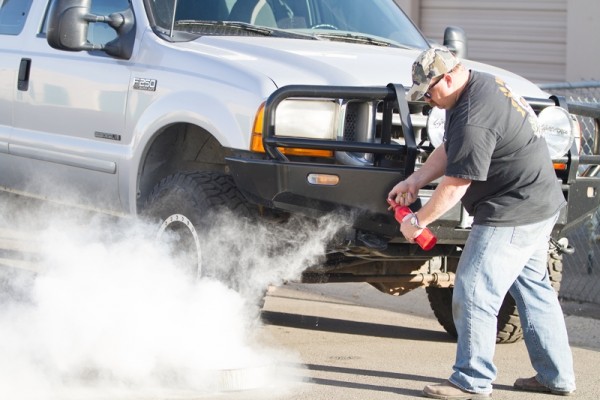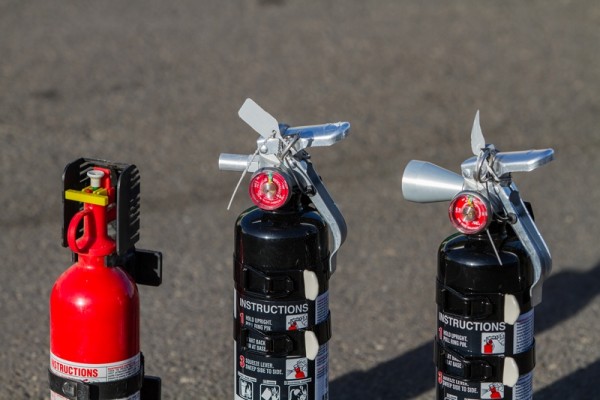No one plans to have a fire on the trail, but that doesn’t mean it can’t happen. If you bury your head in the sand about this possibility, you will likely find yourself shoveling that same sand at your rig as it erupts into flames. That’s why it’s wise to have a fire extinguisher or two mounting someplace on your vehicle.
Like most things in four-wheeling–and in life–fire extinguishers can be a compromise. Ideally you want an extinguisher that is easy to access and big enough to put out any fire. At the same time, you want the extinguisher securely mounted out of the way and compact enough to fit anywhere. Luckily, there are solutions that are tailored specifically for motorsports use and mounting systems that are designed to hold your extinguisher securely in place, yet easy to access.
Fire extinguishers fall into three general categories: Type A, Type B, and Type C.
Type A fires would include things like your campfire or a structure fire. Type A extinguishers work on wood, paper, cloth, trash, and other common materials. Type B is for gasoline, oil, and paint, so this is a good choice for vehicles and to keep in the garage. Type C extinguishers are for electrical fires, which are a common source of vehicle fires as well. The best option is a combination fire extinguisher that covers all of these types of fires. Summit Racing sells everything from one-pound chrome extinguishers that are perfect for hot rods and show trucks, to full race halon fire suppression systems that can be activated with the push of a button.
For most recreational off-roaders, a pair of 2.5-pound extinguishers mounted to the rollcage strike a balance between preparedness, price, and ease of mounting. We chose one H3R MaxOut extinguisher and one HalGuard fire extinguisher for our 4×4.
Why one of each?
The more expensive HalGuard is rated for B and C fires and puts out the flames without doing any additional harm to the vehicle or electronics. The MaxOut is A/B/C-rated and is less expensive, using a dry chemical instead of halon. By carrying both, we can deal with a fire with the halon extinguisher first, and then move to the MaxOut if the halon version isn’t effective (say, if there’s a wood fire on the trail). Plan C is to start shoveling dirt to smother the fire.
You don’t want to just toss the extinguisher behind the seat, where it can become a projectile during a rollover and do more harm than good. Summit Racing carries a variety of mounts to fit any application or budget, and we ensured that our extinguishers were securely mounted, yet easy to reach. Like us, you’ll want to check your fire extinguisher regularly to ensure that it is charged and in proper working order. You should also know how your fire extinguisher functions before you have to use it.
Part of the appeal of four-wheeling is getting away from civilization, so it’s important to make sure you’re prepared before leaving the pavement.











In my opinion, I think that it is wise to have a fire extinguisher in my car. Ideally, it should be big enough to put out a fire so I might go to a supplier to ask what kind of extinguisher is good for my vehicle. Thanks for clarifying that there are three general categories that I can choose from so I will consider this when I’m buying a fire extinguisher for vehicular use.
I am pretty sure your will get the good update and this option will be biggest tool for you. Thanks a lot for provide the good article easily.
Check out Element fire extinguisher
http://www.elementfire.com
[…] that can handle multiple types, like the one pictured here (rated for A, B & C type fires). Here’s a handy Fire Extinguisher 101 that’ll explain further. (Image/OnAllCylinders – Paul […]